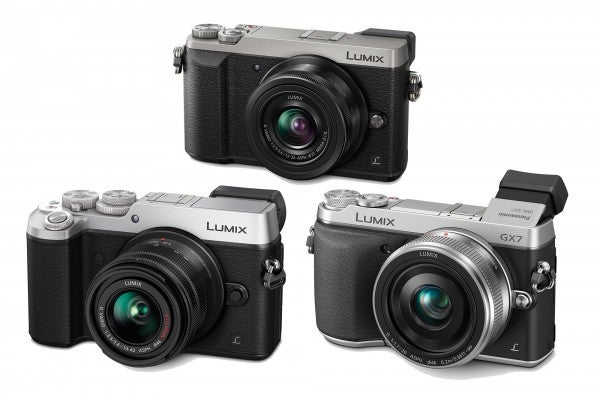Panasonic has announced a new compact system camera in its “GX” line-up. Here we take a look at the key differences between it and the other GX cameras.
Panasonic’s new GX80 is designed to be a cheaper and smaller alternative to the GX8, which was announced last year. However, in design it looks remarkably similar to the popular GX7. Let’s have a look through the specifications to discover what’s new, what’s different and what’s stayed the same.
Panasonic GX80 vs Panasonic GX8 vs Panasonic GX7: sensor
Panasonic was a big fan of 16 MP until the GX8, when it jumped to 20MP for the first time. Well, for the GX80, that familiar 16MP is back – just like in the GX7. Panasonic hasn’t said whether it’s the same sensor as found in the GX7 but for the first time in a Panasonic G series camera, the optical low pass filter has been removed. In short, this means that detail resolution should be improved – up to 10% according to Panasonic.
Panasonic GX80 vs Panasonic GX8 vs Panasonic GX7: processor
The latest Venus Engine is found inside the GX80, just like the GX8 and the GX7. However, Panasonic says that this engine has been tweaked to specifically deal with the removal of the optical low pass filter and compensate for any potential moire patterning issues.
Panasonic GX80 vs Panasonic GX8 vs Panasonic GX7: 4K modes
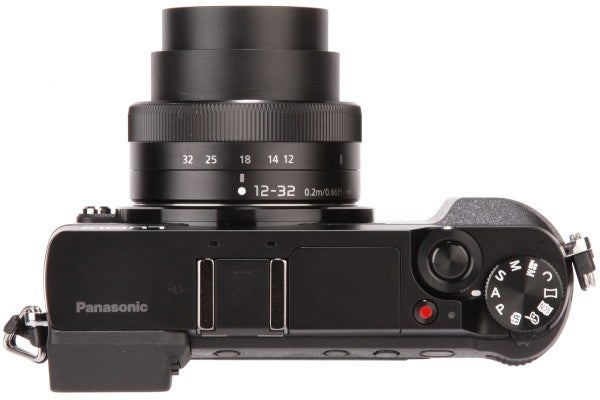
One control dial surrounds the shutter button, with another placed beneath your left thumb
Panasonic is extremely keen to bang the 4K drum, being its main point of reference when talking about its newest models. The GX7 didn’t have any 4K ability, but the GX8 did, and so of course naturally the GX80 does too.
In essence, what this means is that you can record at 30fps and extract an 8MP still which captures the exact moment you need. 4K also facilitates “post focus” and “light composition” modes. That makes both the GX80 and GX8 great for capturing split-second moments, such as sport, wildlife, children and anything else that likes to move quickly. Oh, and you can record video at 4K too, if you like.
Panasonic GX80 vs Panasonic GX8 vs Panasonic GX7: shutter
Panasonic has designed a new type of mechanical shutter mechanism for the GX80 which enables it to be much quieter than the mechanical shutter inside the GX8 and GX7. This means that you can use it in situations where you might have been forced to use the silent electronic shutter previously. The trade off for this is that the GX80’s mechanical shutter tops out at 1/4000 of a second, compared with the GX8 and GX7’s top speed of 1/8000. If you need to shoot faster than this, you can use the electronic shutter, which facilitates speeds up to 1/16000.
Panasonic GX80 vs Panasonic GX8 vs Panasonic GX7: viewfinder
One of the big plus points of the GX8 is its excellent tilting viewfinder. We often find that companies ditch the viewfinder in order to produce a smaller camera, but it’s a much-liked feature by enthusiasts. Happily, Panasonic has kept a 2,764k-dot viewfinder for the GX80.
It’s the same physical size as the viewfinder found on the GX7, however unlike the GX7’s (and GX8’s) unit, it’s fixed and doesn’t tilt, making it less useful for shooting some awkward angles.
Panasonic GX80 vs Panasonic GX8 vs Panasonic GX7: screen
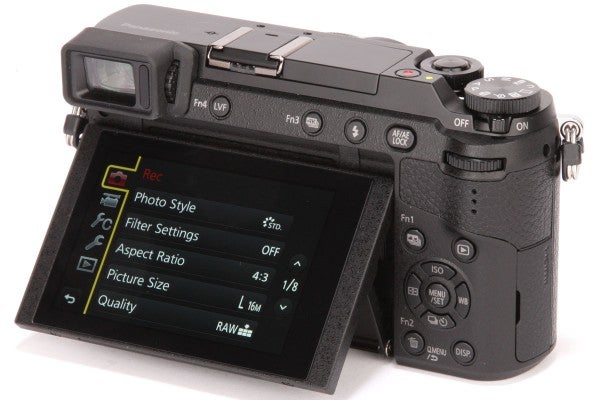
The 3″ touchscreen tilts upwards and downwards
All three of these cameras have touch-sensitive screens – that’s not a surprise as Panasonic has well and truly embraced this technology. However the difference comes in the manoeuvrability of the devices. The GX8 has a free-angle, (or fully articulating) screen, which is useful for video, and of course the ubiquitous selfie as it can face the front of the camera.
Both the GX7 and the GX80 have tilting only screens. While this is useful for some awkward angles, for portrait format images, selfies and video, it is less so. It helps keep the overall size of the camera down though, while all three share the same size (3-inches) and resolution (1,040k-dot).
Panasonic GX80 vs Panasonic GX8 vs Panasonic GX7: Connectivity
All three of the cameras mentioned here have inbuilt Wi-Fi, which allows you to connect the camera to your smartphone for remote control and uploading shots to social media. Panasonic has fallen out of love with NFC though, and although it has it for the GX8, it’s missing from the GX80. This was also the case with the Panasonic TZ100 and Panasonic GM5. Panasonic says that the demand for NFC connectivity is low, with the relevant chip taking up valuable space inside small bodies.
Panasonic GX80 vs Panasonic GX8 vs Panasonic GX7: stabilisation
Panasonic’s gone big with its claims for the GX80. It says that it features the best OIS (Optical Image Stabiliser) on the market. This is supposed to be true especially when using telephoto lenses at their full stretch. The GX80 has Dual IS with 5-axis in-body stabilisation and 2-axis coming from the lens. Meanwhile, the GX8 has only 4-axis in body (still 2 in lens).
Panasonic GX80 vs Panasonic GX8 vs Panasonic GX7: flash
The GX8 doesn’t have a built-in flash unit, but both the GX80 and the GX7 do. You can attach an external flash to the GX8 if you feel you need one, but the GX80 being aimed more at enthusiasts is aiming to give you everything in one package without the need for accessories.
Panasonic GX80 vs Panasonic GX8 vs Panasonic GX7: dimensions and handling
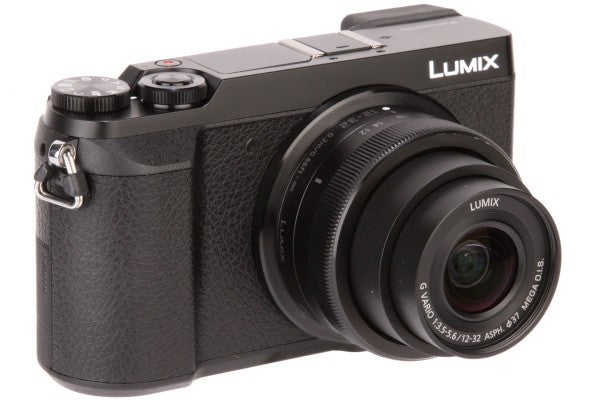
The 16-million-pixel GX80 sits below the GX8 in Panasonic’s range
To look at the GX7 and GX80 side-by-side, you’d be hard pushed to spot too much of a big difference. In terms of measurements, the GX80 comes in at 121 x 70.6 x 31.5mm, making it a tad smaller than the GX7 which measures 122.60 x 70.7 x 54.6mm.
The GX8 meanwhile is quite a bit bigger – something which put some people off. It measures up at 133.2 x 77.9 x 63.1mm.
What do you lose when you have a smaller camera? The GX8 has a fully articulating screen, an exposure compensation dial and a tilting viewfinder – the GX80 does not.
Panasonic GX80 vs Panasonic GX8 vs Panasonic GX7: price
Ah, perhaps the only thing many people will look at… how much is each camera going to set you back? Unsurprisingly, the GX8 costs the most, at £799 including a 14-42mm lens. The GX80’s newly announced RRP is £599 to include the 12-32mm collapsible kit lens. Meanwhile, because of its now relative old-age, the GX7 is available at the bargainous price of £364.99 including 14-42mm lens.
Panasonic GX80 vs Panasonic GX80 vs Panasonic GX7: conclusion
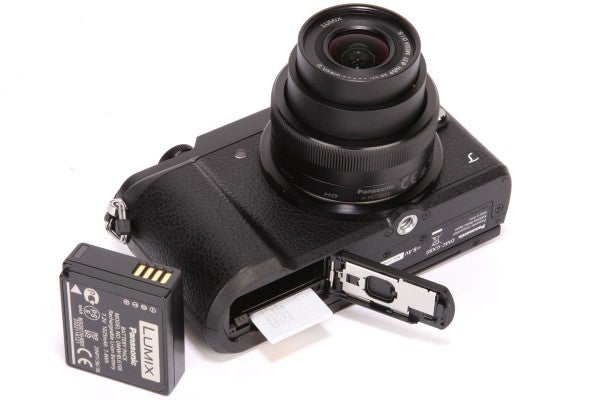
The DNW-BLG10E battery should be good for around 300 shots per charge. Note the forward-positioned tripod socket
Which camera you’ll be tempted to buy may very well depend on quite a few factors. The GX80 should be very appealing to travelling photographers thanks to its small size, while still keeping all of the 4K photo modes, a viewfinder, inbuilt Wi-Fi and the promise of high image quality.
The more expensive GX8 has just enough to justify the extra price tag though – namely a fully articulating screen and a bigger (and therefore more usable) tilting viewfinder. Some people also prefer a bigger camera overall, too.
The GX7, available at a great price now, is ideal if you’re not bothered by 4K photo modes but are looking for something small and neat to take on your travels. Bear in mind that image quality should be better from the GX80 – but you’re paying a premium for that jump in detail resolution which you may only really miss when pixel peeping at 100%.





